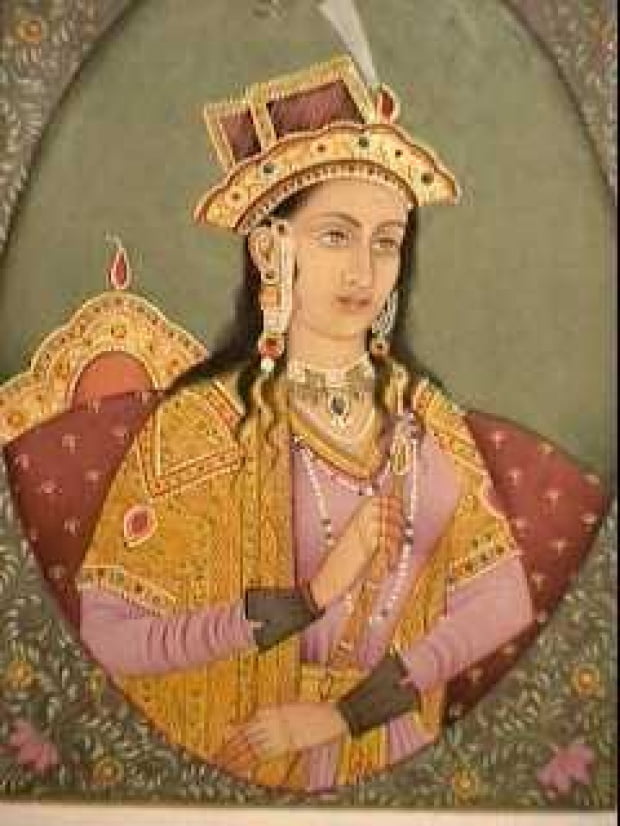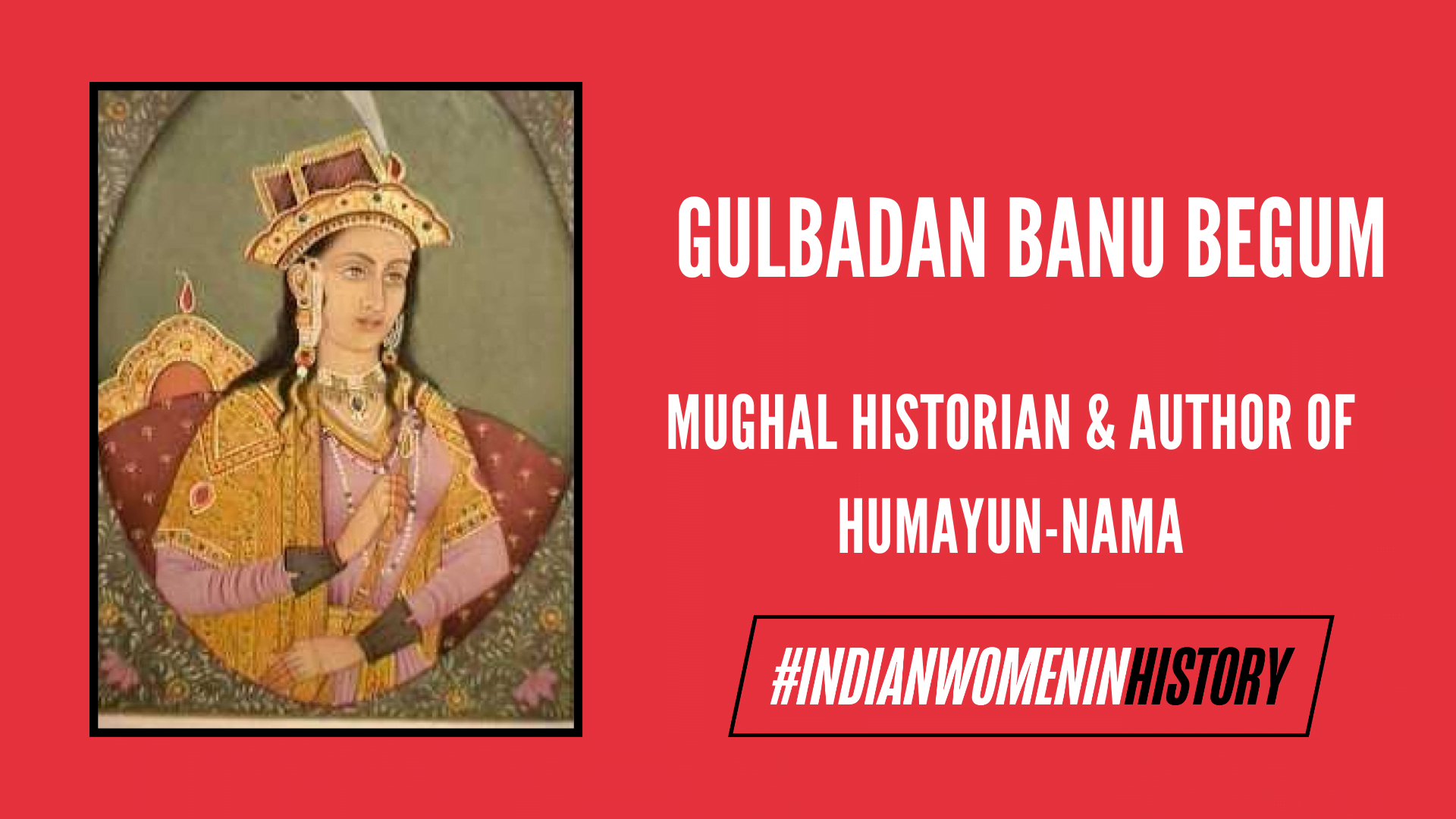The sources we use determine the histories we tell. Histories have traditionally been written by the powerful about the powerful. Historian Angela Woollacott writes about how feminist theory has helped shed light on the power dynamics involved in the ‘masculinization of the category “historian” ‘ and the resultant exclusion of women who participated in history writing. One such historian, whose work is the only surviving history written by a woman in 16th century Mughal India is Gulbadan Banu Begum.
When it comes to Mughal history, historian Ruby Lal writes that the emphasis on administrative and institutional histories has resulted in the central focus being on sources like the Akbarnama and Ain-i-Akbari (names that one might recall from memorizations of school history textbooks). She says that these sources are seen as being most important because they are official compilations that deal with political and administrative matters, the closest that histories come to archives of the modern state.

Indicative of the politics of archiving itself is the peripheral position assigned to Gulbadan’s history. Pushed to the periphery as a ‘minor source’ by many historians, along with other accounts by royal women and servants, is the Ahval-I Humayun Badshah, written by Gulbadan Banu Begum.
Gulbadan’s work is the only surviving history written by a woman in 16th century Mughal India.
Gulbadan Banu Begum was born to Babur and Dildar Begum in 1523 in Afghanistan. The sister of Humayun, she came to write about Babur and Humayun’s reign after being persuaded by her nephew Akbar.
Akbar had commissioned the writing of an official history of the early stages of the Mughal empire and his reign and had accordingly issued an order in 1587, asking state servants and elderly members of the family to write down their memories of earlier times. Only a single copy of Gulbadan’s manuscript remains, that too incomplete. It was translated by colonial scholar Annette Beveridge in 1898.
Susie Tharu and K. Lalita include an extract from her work in their book that compiles writing by women in India from ancient to modern times. They quote translator Annette Beveridge who writes about how Gulbadan’s history ‘lights up a woman’s world’. Gulbadan’s focus is on the everyday life of the royal family.
She writes about the anxieties and pressures of the women in the royal family and even charts the emperor’s travels through the minds of the women in his household. The book also gives an account of the rare pilgrimage to Mecca that the women of the family undertook.

Importantly, Ruby Lal writes about how the harem has been portrayed as a ‘feminine, sexualized, secluded domain’ by many male historians. Gulbadan’s memoir presents a more complex image of the harem with an emphasis on hierarchies in relationships, especially hierarchies based on age.
There is a stark difference between Gulbadan’s description of the harem and the description of the harem by contemporary male historians. It speaks of Gulbadan’s writing being sidelined not only at the time of the compilation of the history of the Mughal empire during Akbar’s reign, but also in our contemporary readings and retellings of the history of Mughal India.
There is a stark difference between Gulbadan’s description of the harem and its description by contemporary male historians.
Ruby Lal makes a comparison between the contrasting portrayals of the harem through extracts from Gulbadan’s memoir and K.S. Lal’s The Mughal Harem (1988), one of the few academic works written on the harem. I’m reproducing the two extracts here. The marked difference is self-evident.
“On court days (ruzhaye divan), which were Sundays and Tuesdays, he used to go to the other side of the river. During his stay in the garden, ajam (Dildar Begam) and my sisters and the ladies (haraman) were often in his company. Of all the tents, Masuma Sultan Begam’s was at the top of the row.
Next came Gulrang begum’s and ajam’s was in the same place. Then the tent of my mother, Gulbar Begum and of Bega Begam and the others. They set up the offices (kar-khanaha) and got them into order. When they put up the pavilions (khaima) and tents (khargah) and the audience tent (bar-gah), the Emperor came to see the camp and the splendid set-out, and visited the begums and his sisters.
As he dismounted somewhat near Masuma Begam’s (tent), he honoured her with a visit. All of us, the begums and my sisters, were in his society. When he went to any begum’s or sister’s quarters, all the begums and all his sisters used to go with him.”
– Ahval-I Humayun Badshah by Gulbadan Begum
“The term Mughal harem conjures up a vision of a sequestered place ensconcing beautiful forms in mysterious magnificence… [The young girls were not exposed to all the celebrations in the Mahal [palace] in which sex orgies dominated or the master bargained for beauty and love on occasions…
Naturally, every lady of consequence tried to win the master’s undivided love and openly competed to gain ascendancy in the harem. Women’s beauty gave them a power as undefined as unique… There were other tensions though not so deep in effect.
These may be classed under the generic term jealousy. But on this, we need not dwell much for the harem was not meant for the old and ailing. It was meant to be a bright place, an abode of the young and beautiful, an arbour of pleasure and retreat for joy.”
-The Mughal Harem by K.S. Lal
K.S. Lal isn’t the only historian reproducing this stereotypical image of the harem that has become commonplace in popular culture as well. Ruby Lal writes about other historians like John F. Richards or R. Nath who write about the harem in the same way, ignoring the layered descriptions that have been put forth by Gulabadan Banu Begum.
Additionally, Susie Tharu and K. Lalitha write about how Gulbadan’s straightforward tone and detailed description portray female and male members of the royal family as well-rounded characters in their own right, as a modern fictional novel perhaps would. For instance, she gives a detailed narration of how Hamida, Humayun’s wife was reluctant to marry him. She portrays Hamida as a warm, impulsive individual with her own ideas, reluctant to become a queen and possibly also unwilling to marry a man much older than her.
At a time when most histories like those by Abul Fazl or Bayazid Bayat were written as flattering accounts of reigns, Ruby Lal writes that Gulbadan’s documentation of ‘far more modest incidents’ in Babur and Humayun’s life enables us to make sense of the nature of relationships, conflict and solidarities that constituted diverse forms of community at the time. This allows us to reflect and raise questions about the making and functioning of the Mughal empire, enabling us to focus on an aspect of history that Mughal historians purposely avoided.
Also Read: 6 Indian Queens Who Fought Colonialism
About the author(s)
Shrishti is a student of Media and Cultural Studies. Long rants with female friends help her channelize rage on the world around. Good food, pretentious poetry and cute canines provide her endless pleasure.




